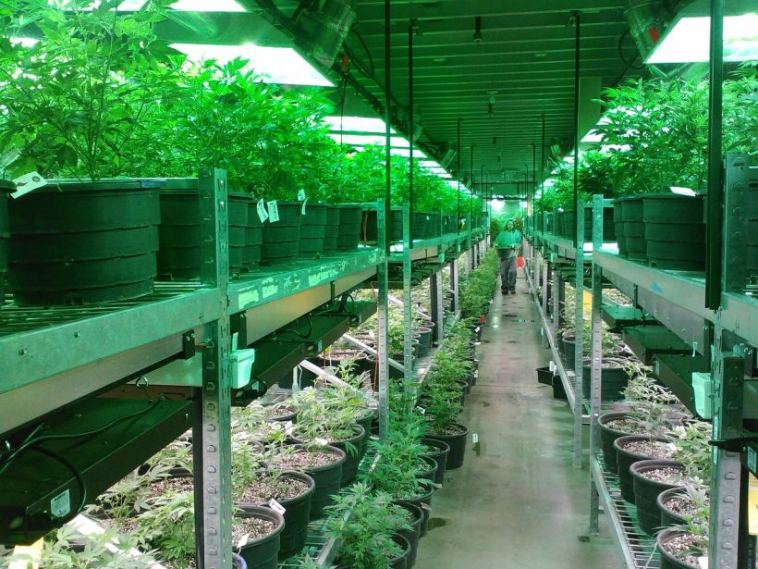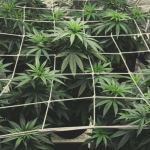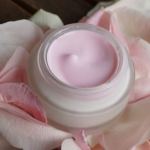- Like
- SHARE
- Digg
- Del
- Tumblr
- VKontakte
- Flattr
- Buffer
- Love This
- Save
- Odnoklassniki
- Meneame
- Blogger
- Amazon
- Yahoo Mail
- Gmail
- AOL
- Newsvine
- HackerNews
- Evernote
- MySpace
- Mail.ru
- Viadeo
- Line
- Comments
- Yummly
- SMS
- Viber
- Telegram
- JOIN
- Skype
- Facebook Messenger
- Kakao
- LiveJournal
- Yammer
- Edgar
- Fintel
- Mix
- Instapaper
- Copy Link
Introduction
Cannabis is a billion-dollar industry. According to Grand View Research, the global legal cannabis market was valued at an estimated USD 16.7 billion in 2022. The research body also paints a fairly bullish outlook of the industry, indicating that it might expand at an incredible compound annual growth rate (CAGR) of 25.4% from 2023 to 2030.
One primary reason behind the steady growth of the cannabis industry is the ever-widening legal landscape, which has triggered a corresponding increase in the demand for weed-infused supplements. Besides, there are multiple ways to enter the profitable weed industry. One such method is becoming a grower.
However, succeeding as a cannabis farmer requires understanding certain aspects of the ideal cannabis growing conditions, such as vapor pressure deficit (VPD). This article examines the top six things a cannabis grower must know about VPD.
What Is VPD?
VPD is the difference between the total amount of moisture in the air and the maximum amount of moisture the air can hold when fully saturated. It can also be defined as the difference between the pressure exerted by water vapor in saturated air (typically 100% at a given temperature) and the pressure exerted by the total water vapor in the air measured at a specific temperature. The difference can be expressed as follows;
VPD = Vapor Pressure (saturation) – Vapor Pressure (air).
VPD is a critical factor in controlling the growth, health, and yield of plants; it regulates plants’ water uptake and transpiration. By controlling the VPD, cannabis growers can regulate the water quantity and nutrients available to cannabis.
Too high or too low VPD levels may lead to many growth problems. Note that high VPD levels can lead to transpiration stress and reduce the plant’s ability to absorb nutrients. While low VPD levels can create humid conditions to mold and mildew growth. Therefore, it’s essential to understand what constitutes the ideal VPD.
That’s when an efficient HVACD system from a trusted supplier is recommended. Altaqua is a brand renowned for its superior HVACD solutions designed especially for plants grown in regions marked by dramatic fluctuations in temperature and humidity. Investing in suitable and high-quality equipment can help stabilize the temperature and humidity conditions of your cannabis plants during their different growth stages.
Six Things Every Cannabis Grower Ought To Know About VPD
1. Ideal VPD Levels Vary by Your Plants’ Growth Stage
There’s a common misconception that vapor pressure deficit is consistent throughout a plant’s growth cycle. Nothing can be further from the truth.
As you shall find, the ideal VPD levels vary depending on the specific stage during your cannabis plants’ growth cycle. It’s important to know when higher or lower VPD is recommended.
2. VPD Depends on Humidity
The VPD can clue you in on how your cannabis plants are responding to the humidity conditions in their growing environment. And as already indicated, the concept is crucial for greenhouse settings.
As a cannabis grower, you can rely on the current VPD to gauge the potential impact of humidity on the growth and development of your plants.
High VPS levels imply that the air can retain more moisture before full saturation. This is common when relative humidity levels are low. Lower VPD levels, on the other hand, imply that the air is more susceptible to saturation. This phenomenon is typically common during periods of high relative humidity.
3. VPD Also Depends on the Temperature
An increase in temperature raises VPD. This consequently reduces the air’s likelihood of becoming saturated, which is excellent for preventing moisture-related plant rot.
A decrease in temperature creates the opposite effect – lowering VPD levels. This makes your cannabis plants more prone to condensation.
4. VPD Affects Transpiration
Transpiration refers to the process whereby plants exhale water vapor. The phenomenon takes place through special openings in plant leaves known as stomata. Now, the VPD levels can significantly impact the transpiration rate.
Higher VPD levels increase the transpiration rate. This could cause your plants to lose excess water and dry out. Low VPD, on the other hand, means low transpiration. A low transpiration rate can slow plant growth and increase susceptibility to moisture-related diseases.
5. VPD Affects Nutrient Intake Too
The fact that VPD has a potential impact on transpiration also means it can influence nutrient intake. A higher transpiration rate implies that the roots of your cannabis plants pull in more nutrients. This could lead to plant stress.
Similarly, a decrease in transpiration rate translates to a reduction in photosynthesis. Without prompt interventions, your cannabis plants could wilt. Hence maintaining an optimum level of VPD is crucial.
6. 0.6 – 1.5 (kPa) is the Ideal VDP Range
Most cannabis plants will thrive under a VPD range of 0.6 – 1.5 (kPa). Ideally, you should aim for 0.8 – 1.2 (kPa) while the plants are vegetative and 1.0 –1.5 (kPa) during the flowering stage.
Cannabis plants produce richer buds with a slight increase in aspects like light and water. It appears the same logic applies to VPD.
Summary
Vapor pressure deficit is an important aspect every cannabis grower should know about. VPD can help you achieve the ideal temperature and humidity in your cannabis plantation. Understanding the correct VPD may also be instrumental in helping you avoid pests, and other environmental hazards cannabis plants are often subjected to. Ultimately, properly tracking VPD levels could be an effective way to achieve a bumper harvest naturally and with minimal expenses.


